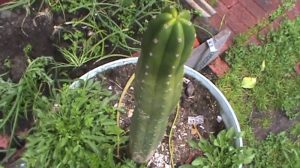
Rustic garden– The contact with nature is one of the concerns of modern man. The rush and pollution of the big city make us appreciate more and more the beauty of natural environments, so we try to bring it closer to our homes through grateful plants.
A good way to approximate the freshness of the countryside to the home is to project a rustic garden on our plot.
Although not all landscapers agree when it comes to defining this type of garden, most agree that the rural and the autonomous must be present as basic characteristics.
The main idea that has to haunt us when we start designing is to pose a free space, similar to the picture we would find in the field. That is why the autonomous is essential.
Hence, we propose to resort to materials from the same area where we are: stone, wood, plant species Denominations aside, Midyear seems to agree that “it is a design based entirely on the natural surrounding landscape “.
In the same way they are pronounced from Art and Urban Landscapes: this type of garden is conditioned by external factors, such as the attached dwelling or the landscape around the plot. Country houses or far from large cities.
The rustic garden materials and species

It seems logical that, if the idea is to create a field garden in the image and likeness of the surrounding landscape, the plants and materials that we will use in the project will have to start from the environment that surrounds the house. “Usually resorting to native species, with a variety of colors and smells, coming and acclimated to the area,” point out from Art and Urban Landscapes.
It is also common to use accessories such as stone or wood, materials that are or imitate the raw materials that we can find in nature, and where the hand of man has modified them by artisan means.
Soils, walks and walls are usually taken care of so that be in harmony with the environment .Fountains, orchards, decoration with tools, agricultural tools , tend to be very integrated in this type of gardens.
Teresa del Pozo, from Raymundo, proposes an example that drinks from our own History. ” The monastic gardens are especially rustic and rural because they combine native species, vegetables and medicinal varieties.
The specialist proposes us to create hedgerows with Anatolian or any other aromatic plant , and to cover the interior of flowers and tomato plants . The orchards are not always in terraces: a tomato tree between flowers can be an innovative idea, combining the beautiful and the rustic.
The landscape painter tells us that it was “the Romans who began to put into practice the rustic garden, which combines the beauty of nature with its usefulness.
The huge Roman villas included gardens with small farms. The Arabs also developed this type of garden, including orange trees. The fruit cannot miss the rustic garden “.
The landscaper Juan Luis Ruiz Midyear adds that usually discard the field: is used to” meadows with flowers and other herbs meadows, adapted to every climate and region.
The proportional relationship between deciduous and perennial leaves,” he proposes, “changes in favor of the expiration, the perennial happens to represent 25%, allowing that, with the fall of the leaves, the garden shows us the four seasons with their entire splendor.
The rustic garden, therefore, varies depending on the geographical location.
This type of design in Asturias or Alicia could incorporate meadows, due to the type of surrounding landscape, offering a greener and rugged image, however, it would not be the same in Andalusia or Extramural, where we can resort to olive trees and medicinal shrubs, resulting in Luminous, austere and aromatic landscape.
Ordination: shape the garden
If something is characterized by the rustic garden is the absence of form . Or, at least, pretend it.
There is no order or balance; it must be as capricious as nature itself is. “They should be open, spacious gardens, where the user is comfortable and where they can perform the activities of the rural areas: walking, gardening and gardening, rest …”, propose us from Art and Urban Landscapes.
“It is intended that maintenance is minimal , fleeing geometric parterres or areas bounded by artificial means.
On the part of Jardiniere, Teresa del Pozo opts for a light ” orthogonal arrangement , eminently practical”, for the rustic ones, but with more curves, games, capricious forms, more libr e in what she calls a wild garden.
The specialist Juan Luis Ruiz Dyezma proposes soft, never sinuous curves that can inspire artificiality.” The distribution of spaces should not project geometric rooms, but disorderly and informal.
Another of the key points is the chromatic that comes from the chosen plant varieties. Dyezma proposes harmony in color and avoid contrasts: “when only one color is used in the chromatic range of the flowers, in all its tonalities, very subtle effects are created that I personally love.
For example , yellow: all the flowers in dry yellow, yolk yellow, pale yellow , etc.
Maintenance works
It may seem that a rustic garden hardly requires work. And, in principle, that’s the way it should be, since the goal is to maintain it by itself , just as the surrounding landscape is maintained.
However, in practice, it is not so easy to leave our garden at your own free will, since you can immediately get out of control. Teresa del Pozo explains that “it is necessary to delimit the plantations and prevent them from eating each other. Planning a rustic or wild garden well is complicated, he admits.
Juan Luis Ruiz Dyezma affirms that ” there is no pruning here, except for cleaning: we will never try to give shape to the vegetal elements”.
It is fundamental, therefore, to control the growth of the plants, but not to organize it or give it an aesthetic different from the one that corresponds to them.
On the other hand, rustic horticulturals require a greater amount of attention, due to the needs of the crops themselves.
Regarding irrigation, Del Pozo adds that “the first two years we will have to water a lot, although little by little we will reduce resources, as long as it is able to support itself thanks to the rainwater.
How to grow a garden in small spaces
The green spaces inside the house are key to the flow of energy from home. There are plants that promote good energy and decorate spaces at the same time, creating more beautiful and friendly environments. In addition to purifying the air and promoting good health, work in contact with plants improves mood and is considered a therapeutic activity and in many cases healing.
However, it can happen that one does not have a vast space to plant a large orchard or garden. Maybe it’s a backyard or a small balcony, but it’s worth creating corners to plant. Here are some ideas to inspire you to have your green space.





